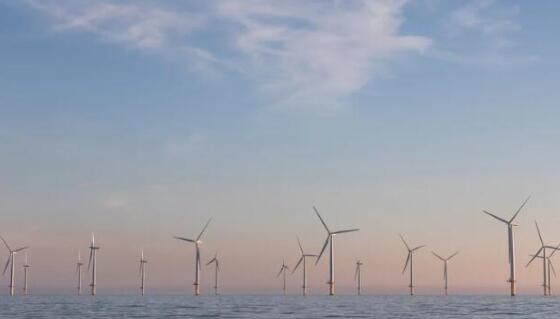A new report by Wind Energy Ireland has found thatIrelandis not moving fast enough to meet the government's carbon emissions targets for the power sector by 2030.
The report, prepared by professional energy consultants Baringa and TNEI, added that all existing plans and targets were insufficient.
It shows that even if all existing plans forIreland's energy system are improved and accelerated,Ireland's energy sector will still exceed its sectoral carbon emissions limit by 11 million tonnes of greenhouse gases by 2030.

The report highlights the need for extensive new energy grid infrastructure, as well as a more rapid exit from coal and peat generation.
It also urged large volumes of offshore wind to be commissioned as early as 2028, which according to industry experts is currently the earliest date for offshore wind deliveries.
Currently, wind energy saves more than twice the carbon emissions of all other renewable energy technologies in Ireland combined.
WEI said the industry has a range of projects, as well as all the necessary expertise and investors, to fit within the extremely demanding industry carbon budget.
However, it warned that it could not succeed without a firm response from all levels of government and the political system.
Today's report sets out three key priorities for the government ahead of setting a sectoral carbon budget.
The first is to speed up the delivery of onshore wind and solar power to reduce carbon emissions as early as a decade.This is because the first offshore wind farm is not expected to be built until 2028.
The second is the delivery of additional power infrastructure projects beyond those currently planned.
This includes additional power line upgrades, as well as the rapid deployment of smart grid technologies, including a system called "Dynamic Line Ratings," which allows power systems to carry more power in cold weather.
The third priority is to start working on zero-carbon technologies now, such as battery storage, new power interconnects, and demand-response technologies that can reduce electricity demand when supplies are tight.
These measures will replace the need for fossil fuel-based backup power generation capacity, the report said.
Noel Cunniffe, chief executive of Wind Energy Ireland, said Ireland's electricity grid was designed for the fossil fuel-based economy of the 20th century and no longer works.
He said Ireland needed to build much-needed new infrastructure, such as a north-south interconnection, and invest in EirGrid and ESB Networks to ensure the system could run on 100 per cent renewable energy when wind and solar became available.
Partner at Baringa Mark Turner said the analysis showed "not only the ultimate goal of decarbonisation is critical, but how we achieve it".
"The speed and timing of renewable energy deployment over the next few years will have a huge impact on cumulative CO2 emissions, and this is how Ireland's decarbonisation performance will be measured," Mr Turner said.
"The massive and sustained power generation from fossil fuels is rapidly eating into the carbon budget.
"We show that a renewed effort is now needed to ensure that onshore renewables and a stronger grid are deployed as soon as possible. This must be seen as a national priority if Ireland's climate ambitions are to be achieved."
Jeff Kelliher, an expert advisor to TNEI, said that "there is no magic bullet for transforming our power system to net zero".
"However, the early deployment of renewable energy, and enabling this energy to enter the grid, is imperative," Mr Kelliher said.
“Existing grid development strategies are not sufficient and are already very ambitious in such a short period of time. Building the required new level of infrastructure requires urgent and unprecedented action from all corners of the industry.
"We need more infrastructure. We need fit-for-purpose policies. We need transparency and collaboration. We need new ways of thinking and courage to act. We need action."




